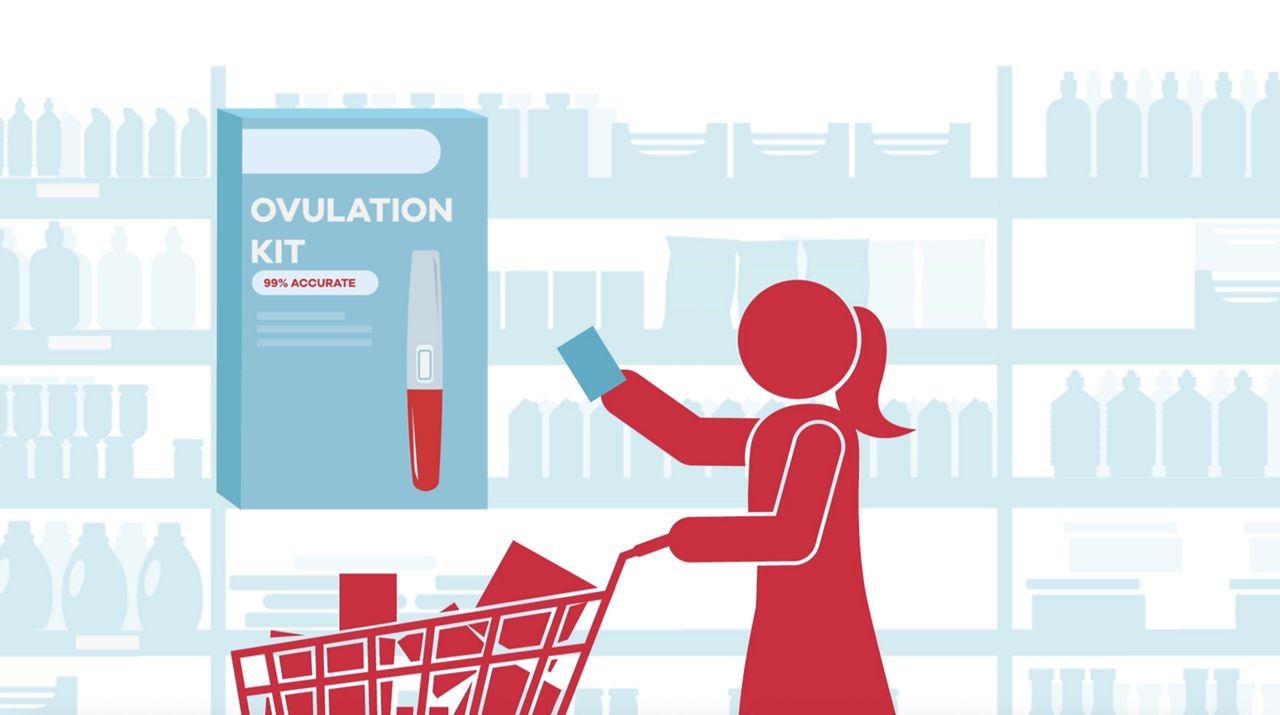Nature is full of cycles that dictate our lives. The cycle of seasons affects the weather. The circadian cycle regulates our sleeping and waking hours.
Then, there’s the menstrual cycle.
“A menstrual cycle is a period of time during which our reproductive or sex hormones rise and fall in a distinct pattern,” explained Dr. Anna Barbieri, an assistant clinical professor of obstetrics and gynecology at Mount Sinai.
The average menstrual cycle is about 28 days, with anywhere from 21 to 35 days considered normal.
Day one is when the festivities begin.
We call it Aunt Flo, the crimson tide, shark week, and even the red wedding – an evocative reference to one of the most violent scenes in modern pop culture.
Officially, it’s called menstruation.
Whatever you call it, the phase know as a “period” typically lasts between 3 and 7 days. During this time, the uterus sheds its lining, resulting in several days of bleeding.
There’s no single definition of normal when it comes to periods, but doctors say there are some key factors to keep in mind.
“Typically periods that are too heavy are not normal,” said Barbieri. “That means if your period is lasting more than 8 or 9 days, that means if you're bleeding and soaking through a tampon or saturating a pad in an hour or less.”
She says large blood clots, shortness of breath, heart palpitations, dizziness, and chest pain could be other signs that something is amiss.
Along with the bleeding, many women experience other symptoms like cramping, headaches, and mood changes. All of these can be a normal part of having a period, but if you’re experiencing severe pain or excessive bleeding, you should speak with your doctor.
While all that is happening, your body is also ramping up production of a hormone known as FSH – follicle stimulating hormone.
“It's a hormone that are released from our brains that tells the ovary to make estrogen,” Barbieri explained.
This is called the follicular phase. It starts at the same time as your period and continues for about a week after you’ve stopped bleeding.
During this phase, a fluid filled sac in the ovaries – called a follicle– gradually grows, maturing an egg inside. As the follicle grows, it releases estrogen which starts to thicken the uterine lining.
The increased estrogen also means increased energy. In fact, during the latter half of the follicular phase, you’re probably feeling pretty darn good.
Then another hormone comes into play. A spike in Luteinizing hormone – or LH – triggers the release of the egg from the ovary into the fallopian tube.
The release of that egg marks the end of the follicular phase, and the start of the phase known as ovulation.
Ovulation usually occurs around day 14 and lasts only one to two days. This is the part of the cycle when you’re most likely to become pregnant
After ovulation, the egg travels to the uterus and the body enters the luteal phase.
During this phase, the empty egg follicle in the ovary forms a gland called a corpus luteum, which produces estrogen, and large amounts of progesterone – a hormone that works to further thickening the uterine lining in preparation for pregnancy
If, after about 10 days the egg has not been fertilized, the corpus luteum breaks down, and hormone levels drop.
The hormone fluctuations during this phase are associated with a litany of unpleasant side-effects collectively known as pre-menstrual syndrome or PMS
“Women that experience PMS – so premenstrual syndrome – will often complain of a mix of both emotional and physical symptoms. They can be weight gain, they can be bloating, they can be breast tenderness, but they can also be sleep disruption, lower mood or mood swings,” said Barbieri.
By the end of the luteal phase, the uterine lining has thinned and begins to shed, starting the cycle over again.
Like many of nature’s cycles, the menstrual cycle is largely out of our control.
But understanding what’s happening at each stage and paying attention to how each phase affects your health can help you to better care for your body throughout the month and recognize changes that could signal a problem.











